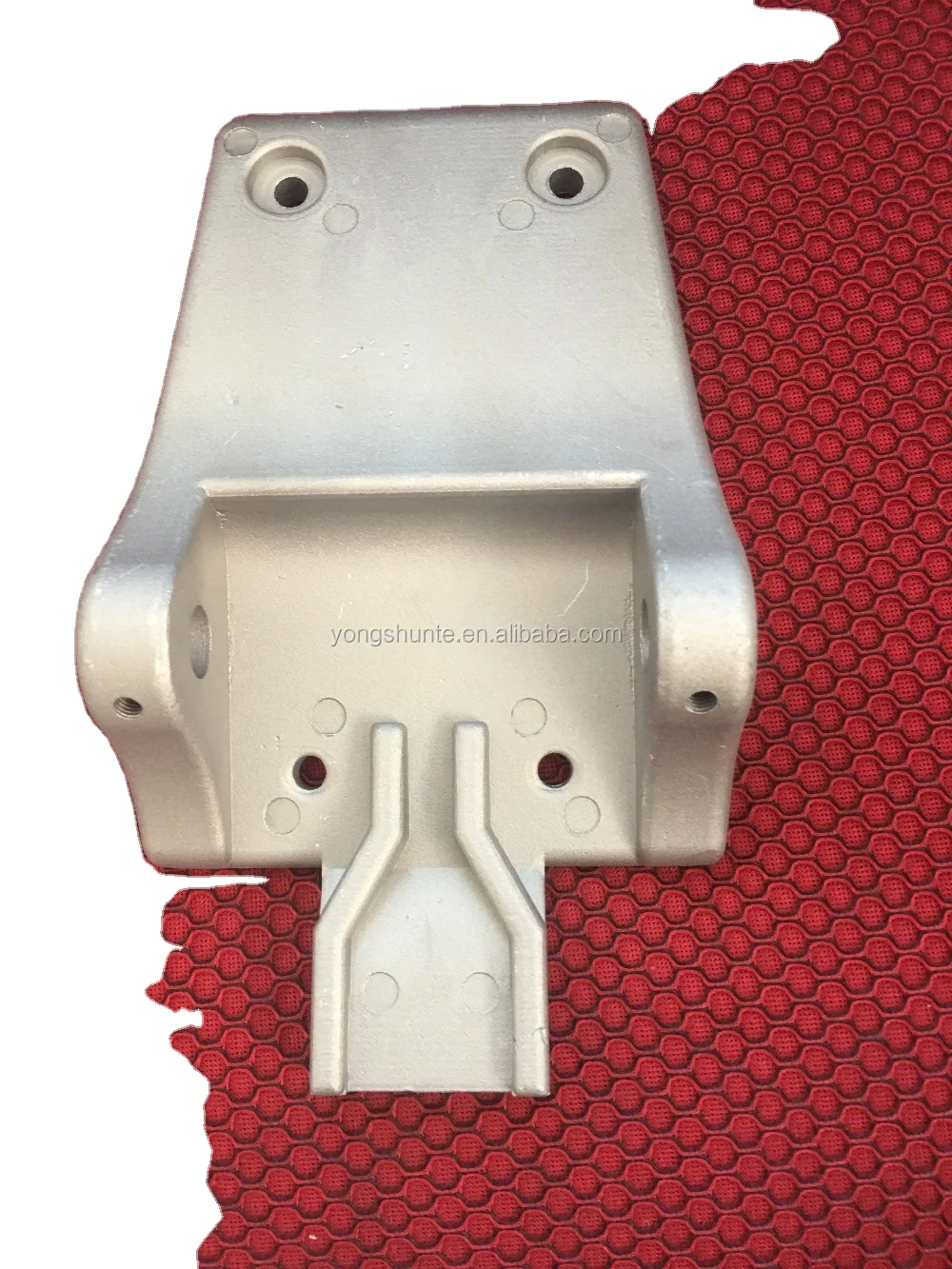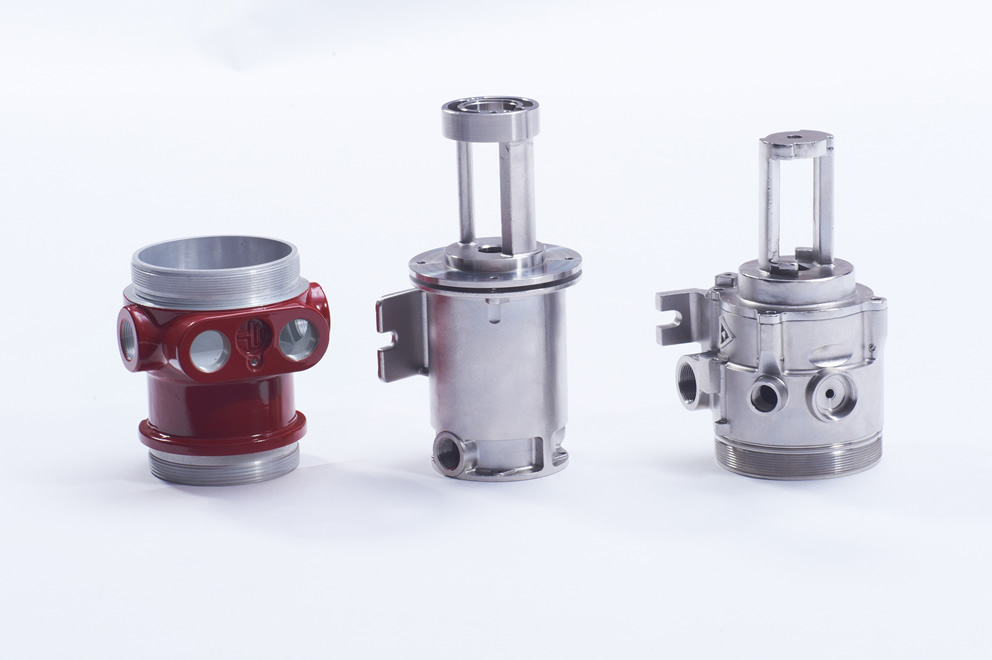Key features that make Precision aluminum casting a reliable choice in metalworking
Wiki Article
Checking Out the Innovative Processes Behind Modern Light Weight Aluminum Factory Procedures
Modern aluminum factory operations are undertaking considerable change. Automation and AI are improving production approaches, boosting both efficiency and accuracy. The integration of 3D printing is streamlining mold and mildew creation, while sustainability methods are coming to be much more vital. Each of these advancements plays a crucial role in redefining the sector. The ramifications of these adjustments prolong beyond plain production effectiveness. What opportunities and difficulties lie ahead for light weight aluminum shops in this advancing landscape?The Function of Automation in Aluminum Foundries

Automation contributes to boosted safety requirements within the shop atmosphere. By moving dangerous jobs to machines, human workers can concentrate on managerial roles and quality assurance, minimizing the danger of accidents. In addition, information analytics originated from automated procedures offer important understandings right into operational efficiency, resulting in far better decision-making and constant improvement. As the need for aluminum products grows, the adoption of automation technologies will likely increase, even more changing the landscape of light weight aluminum shop procedures.
Innovations in Casting Technologies
Recent improvements in casting innovations are changing aluminum foundry procedures. Advancements such as 3D printing combination, progressed alloy formulas, and automated procedure optimization are enhancing performance and product high quality. These growths are essential in fulfilling the evolving needs of the market.3D Printing Assimilation
Incorporating 3D printing innovation right into aluminum foundry procedures has actually changed standard casting methods, improving both performance and accuracy. This ingenious approach permits the quick manufacturing of complex mold and mildews and cores, considerably reducing preparations and product waste. By making use of additive production, factories can create complex geometries that were formerly difficult or impossible to attain with standard methods. The flexibility of 3D printing also makes it possible for fast layout adjustments, promoting a much more nimble production process. In addition, this assimilation sustains making use of lightweight structures, which is increasingly important in markets such as vehicle and aerospace. As aluminum factories remain to embrace 3D printing, they position themselves at the center of technical advancement, driving improvements in product quality and operational abilities.Advanced Alloy Formulations
The development of advanced alloy solutions has actually substantially enhanced spreading modern technologies in light weight aluminum foundry operations. These formulations integrate numerous elements, such as silicon, magnesium, and copper, to improve mechanical residential properties and thermal resistance. By customizing the make-up of aluminum alloys, manufacturers can achieve certain efficiency qualities that satisfy the demands of varied applications, from auto components to aerospace frameworks. Using innovative alloys additionally contributes to reduced weight and increased toughness, which are essential aspects in contemporary design. In addition, technologies in alloy growth enable far better fluidness throughout casting, leading to boosted surface area coatings and decreased flaws. Generally, progressed alloy solutions represent a substantial jump ahead, placing light weight aluminum factories to fulfill the developing demands of numerous industries efficiently.Automated Process Optimization
Advancements in casting modern technologies have led the method for computerized process improvement in aluminum factory procedures. By incorporating advanced software and real-time information analytics, shops can now streamline manufacturing procedures and improve high quality control. Automated systems monitor variables such as pressure, air conditioning, and temperature level prices, enabling immediate changes that decrease issues and waste. Furthermore, machine knowing algorithms examine historic performance information to forecast excellent settings, thereby enhancing effectiveness and lowering cycle times. Robotics likewise play a considerable function, managing repeated jobs that enhance safety and precision. Generally, these advancements not only drive functional efficiency however additionally make it possible for factories to fulfill the growing demand for high-quality aluminum components in various sectors.Smart Manufacturing and Market 4.0 Combination
The integration of Smart Manufacturing and Market 4.0 within light weight aluminum foundries is transforming operational performance. By leveraging IoT innovations, automation, and robotics, foundries can optimize production processes and reduce downtime. Furthermore, information analytics offers essential insights that enhance decision-making and drive continual enhancement.IoT in Factory Operations
As manufacturers increasingly embrace the Internet of Things (IoT), foundry operations are experiencing a transformative change in the direction of smart production and Industry 4.0 integration. Aluminum Casting Company. IoT modern technologies enable real-time data collection and evaluation, enhancing decision-making processes and operational effectiveness. Sensors and linked gadgets keep an eye on equipment performance, material use, and environmental conditions, enabling for positive maintenance and source optimization. This connectivity promotes an extra nimble production setting, where modifications can be made quickly in reaction to market demands. Additionally, IoT helps with improved traceability and quality assurance, as information from the whole production cycle can be conveniently accessed and analyzed. On the whole, the integration of IoT in shop procedures considerably improves performance and drives development in light weight aluminum manufacturing processesAutomation and Robotics Combination
Automation and robotics assimilation is reinventing aluminum foundry procedures by boosting performance and accuracy. This transformative method enhances procedures such as molding, pouring, and finishing, minimizing human error and enhancing result uniformity. By employing innovative robotic systems, foundries can accomplish greater production rates while keeping strict quality standards. Automated systems additionally allow real-time monitoring and flexible control, permitting quick changes to production parameters. Additionally, the integration of robotics decreases labor expenses and minimizes safety and security risks associated with hands-on handling of molten metal. As foundries welcome clever production principles fundamental in Industry 4.0, the synergy between automation and robotics solidifies their affordable edge, leading the way for sustainable growth and development in the aluminum casting industry.Data Analytics for Efficiency
Using data analytics considerably improves performance within aluminum shop operations, aligning with wise production and Market 4.0 concepts. By leveraging real-time information collection and analysis, shops can monitor production procedures, predict equipment failures, and enhance resource allocation. This data-driven technique promotes informative decision-making, allowing managers to enhance and determine traffic jams workflow. In addition, anticipating analytics equips foundries to prepare for market demands, consequently lowering waste and making sure timely item distribution. Combination of data analytics with IoT devices enhances operational exposure, promoting a proactive upkeep culture. Eventually, executing these advanced logical strategies not only boosts performance yet additionally drives development, positioning light weight aluminum foundries to fulfill the advancing needs of the industry while keeping one-upmanships in a quickly transforming landscape.Lasting Practices in Aluminum Spreading
While the light weight aluminum spreading industry has traditionally encountered environmental challenges, several factories are now taking on sustainable techniques to mitigate their effect (Precision aluminum casting). A substantial focus has been on reusing light weight aluminum scrap, which not just minimizes waste however likewise saves energy contrasted to primary light weight aluminum manufacturing. Ingenious melting modern technologies, such as induction heating systems, improve power effectiveness and lower greenhouse gas emissionsIn addition, factories are implementing closed-loop water supply to reduce water consumption and reduce thermal air pollution. Using green binders in mold-making procedures is gaining traction, more decreasing unsafe exhausts.
Furthermore, some centers are buying renewable resource resources to power operations, lining up with international sustainability objectives. By integrating these practices, the aluminum spreading sector is developing toward a much more environmentally responsible future, demonstrating that economic development can coexist with eco-friendly stewardship - Precision aluminum casting. These initiatives mirror a dedication to sustainability and the value of environmental responsibility in manufacturing
Quality Assurance Innovations
As the light weight aluminum casting sector advancements in the direction of sustainability, the value of quality control innovations comes to be increasingly evident. Modern light weight aluminum factories are embracing advanced modern technologies to improve their top quality assurance procedures. Techniques such as real-time surveillance and data analytics enable makers to detect disparities and issues early in the manufacturing cycle. Executing automated inspection systems furnished with equipment learning algorithms assurances that items fulfill rigid high quality criteria while reducing human error.In addition, the assimilation of non-destructive screening approaches, such as radiographic and ultrasonic assessments, supplies much deeper understandings right into the stability of castings without harming the material. These technologies not just improve item dependability however also lower waste, straightening with sustainability goals. In enhancement, the fostering of standard top quality structures helps simplify operations throughout different shops, guaranteeing uniformity in output. Jointly, these improvements are reshaping quality assurance, promoting a culture of excellence within the aluminum spreading market.
Future Patterns in Aluminum Factory Procedures
What innovations exist ahead for light weight aluminum shop operations? The future of light weight aluminum factories is poised for transformation through innovations in automation, man-made intelligence, and lasting methods. The integration of robotics and automated systems is expected to boost performance and precision in the spreading processes, decreasing human error and labor prices. Furthermore, AI-driven analytics will enable real-time monitoring and anticipating maintenance, optimizing functional performance and minimizing downtime.Sustainability remains a prime focus, with factories progressively embracing environment-friendly practices, such as utilizing recycled light weight aluminum and developing low-emission melting technologies. Technologies in 3D printing are likewise prepared for to transform mold-making, permitting complex geometries and minimized product waste. As the industry accepts digitalization, data-driven website decision-making will certainly become pivotal, making it possible for foundries to respond swiftly to market demands. Collectively, these trends guarantee to redefine light weight aluminum factory operations, making them more efficient, sustainable, and adaptable to future obstacles.

Often Asked Inquiries
What Security Procedures Are Applied in Aluminum Factory Procedures?
Light weight aluminum shop operations carry out different precaution, including personal safety equipment, ventilation systems to manage fumes, regular safety training, emergency situation action strategies, and rigid surveillance of temperature level and tools to avoid crashes and warranty worker safety and security.Exactly How Do Factories Manage Workforce Training for New Technologies?

What Materials Are Commonly Recycled in Light Weight Aluminum Foundries?
Light weight aluminum factories commonly recycle scrap light weight aluminum, consisting of post-consumer products like drink canisters, automobile parts, and building and construction materials. This recycling process minimizes waste and conserves resources, adding to a more lasting light weight aluminum manufacturing market.Exactly How Does Light Weight Aluminum Casting Impact the Setting?
Light weight aluminum casting impacts the environment via energy-intensive processes, greenhouse gas discharges, and possible local air pollution. Nevertheless, developments in reusing and sustainable techniques can minimize these effects, promoting an extra environment-friendly approach to light weight aluminum production.What Are the Common Lead Times for Aluminum Casting Projects?
Normal preparation for aluminum casting tasks differ substantially, usually varying from two to six weeks. Factors influencing these timelines include complexity, order size, and product availability, impacting overall production timetables in foundry procedures.
Automation increasingly plays a vital function in light weight aluminum shops, improving effectiveness and accuracy in the manufacturing procedure. Advancements in casting innovations have led the way for computerized procedure improvement in aluminum factory operations. Utilizing data analytics significantly enhances performance within light weight aluminum factory operations, aligning with clever production and Industry 4.0 concepts. A substantial emphasis has been on recycling aluminum scrap, which not just reduces waste yet likewise preserves energy contrasted to key aluminum production. Light weight aluminum foundries typically reuse scrap aluminum, consisting of post-consumer items like beverage containers, automotive components, and building and construction materials.
Report this wiki page